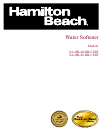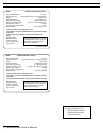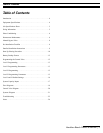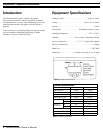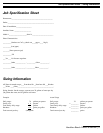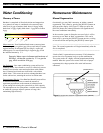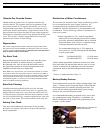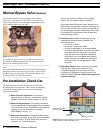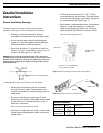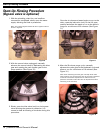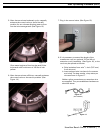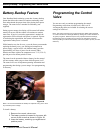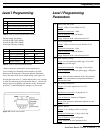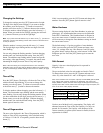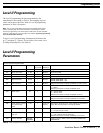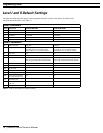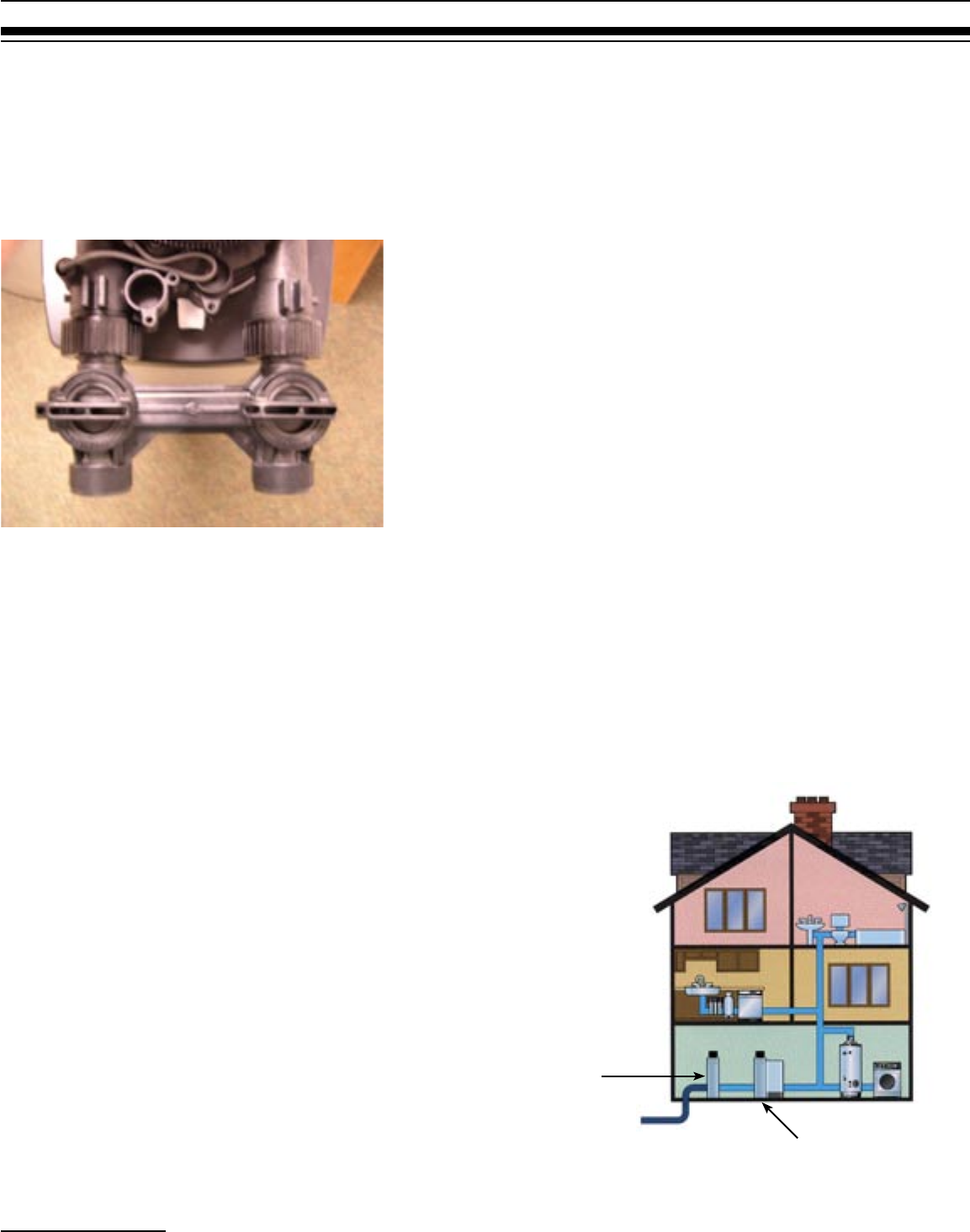
8 | Hamilton Beach Owner’s Manual
Hamilton Beach Owner’s Manual | 9
Manual Bypass Valve / Pre-Installation Check List
Your Hamilton Beach system is equipped with a manual
bypass valve. (See Figure 4.) This valve is to be used if you
want to stop the flow of water through the equipment but still
allow untreated water into your home.
For example, a bypass valve may be used if a leak occurs in
the system or when the homeowner(s) will be gone from the
home for an extended period of time.
-------------------------------------------------------------------------------------
Note:
It is recommended that the bypass valve knobs be engaged and
disengaged (turned in and out of service) once a year to ensure
that the O-rings are functioning. This allows the bypass valve
to turn more freely if it becomes necessary.
-------------------------------------------------------------------------------------
Pre-Installation Check List
The following items should be checked and verified prior to
the installation of the equipment. Under certain circumstances,
as indicated, additional procedures or pieces of equipment
may be recommended.
o Water Pressure Verification: A minimum
water pressure of 20 psi is required for normal
operation. Maximum water pressure is 120 psi.
o Electrical Requirements: The system includes a
12-volt transformer to be plugged into a standard
110 volt 60 Hz current. If additional cord length is
required, a 15 foot extension is available.
(AVP-1000907, see pg. 11)
o Drain-Line Connection: Choose a location close
to a drain to put your brine tank. Avoid overhead
runs in excess of 25 feet. Drain line must be a
minimum of ” inside diameter.
Manual Bypass Valve (Optional)
Do not use soft vinyl tubing, 3/8” or smaller
tubing. Do not expose tubing to freezing.
When barb drain fittings are used, always use a
hose clamp to secure the tubing to the fitting. Do
not connect the drain line to the overflow line on
the salt storage container. Installation of the drain
line should be in accordance with all state and
local plumbing codes.
o Installation Site: When choosing the proper
locations for the equipment, consider the
following factors:
• Proximity to drain.
• Proximity to electrical outlet.
• Access to plumbing; it is recommended
that when possible both hot and cold water
be treated with the exception of outside
taps. Kitchen cold is optional. Additional
equipment may work better with treated
water. Consult your dealer for details and
the best option for the application. (See
Figure 5.)
o Unpacking System: After removing the system
from the box, inspect the system for any
concealed damage that may have occurred
in shipping. If damage occurred, contact your
dealer for details. Do not install if the system has
sustained damage.
Figure 4: Bypass valve.
Figure 5: Water-using appliances and fixtures in reference to
water-conditioner system installation site.
Water conditioner
Whole-home media
filtration system



